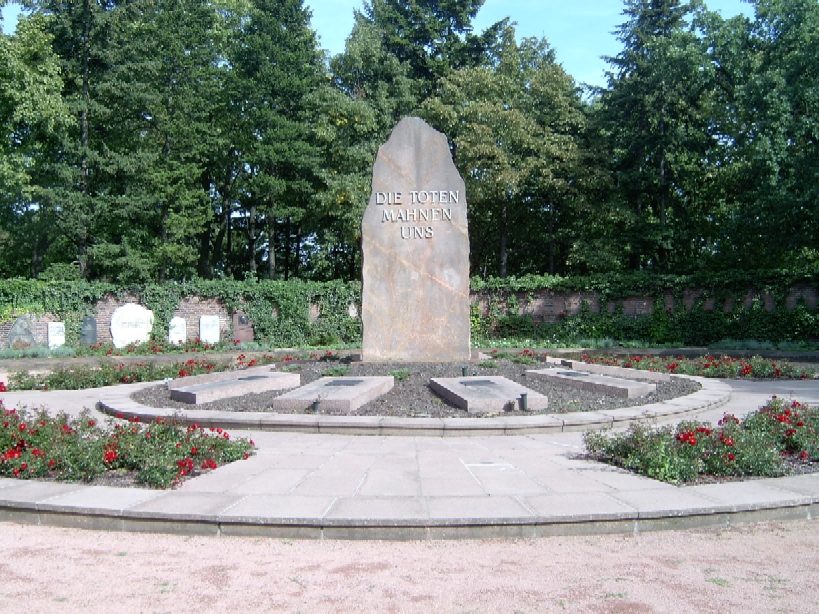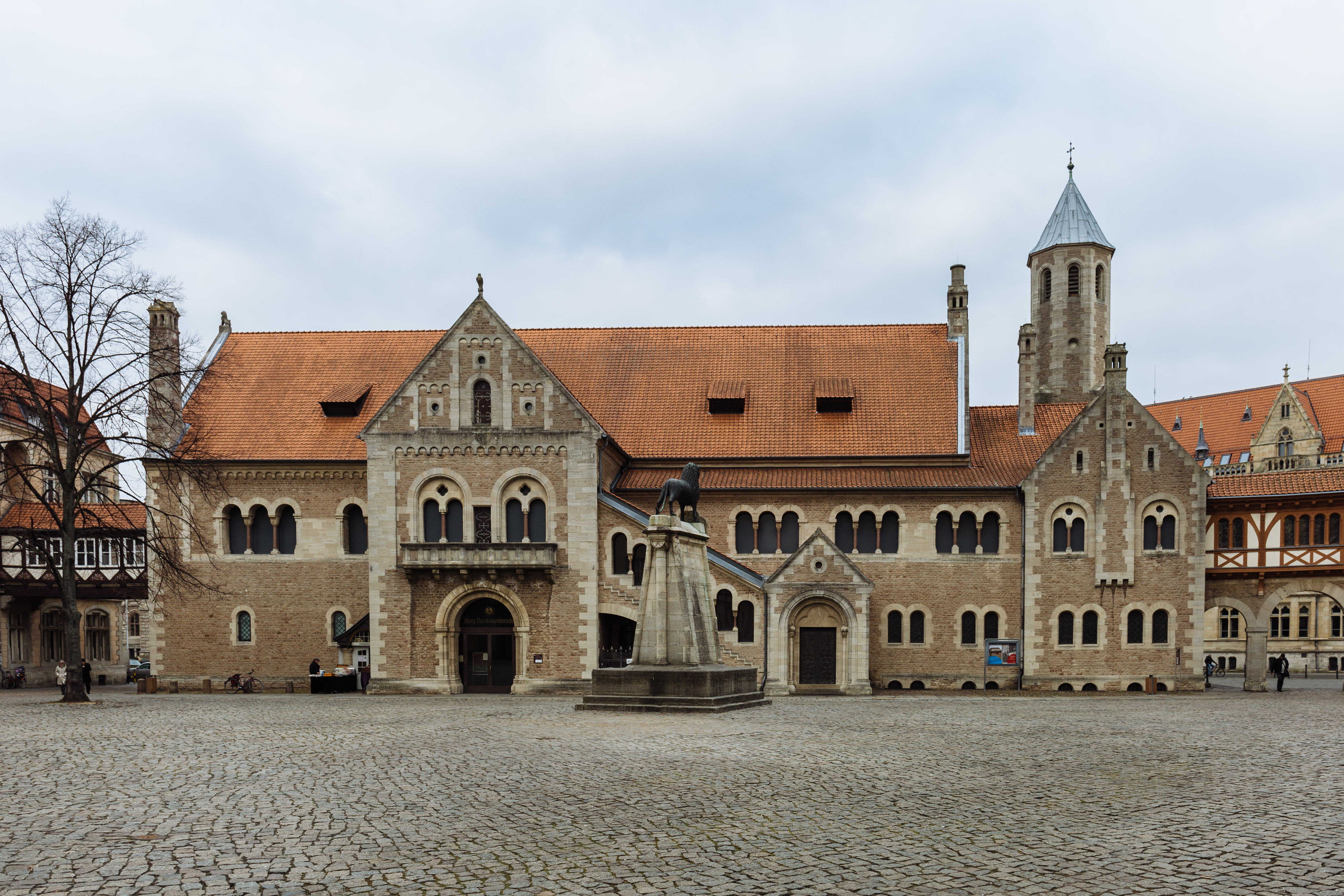|
Auguste Förster
Auguste Förster (7 December 1848, Warburg – 3 October 1926, Brunswick) was a German educationalist and activist in the bourgeois women's movement. She was founder of the Kassel Organization of Women's Groups (Gründerin des Verbandes Kassler Frauenvereine). In 1893 she attended the founding of the World's Congress of Representative Women meeting on the occasion of the 1893 World's Columbian Exposition in Chicago. She was accompanied by Anna Simson, Hanna Bieber-Böhm and Käthe Schirmacher. They took the example of the American National Council of Women as inspiration for founding the Bund Deutscher Frauenvereine The Bund Deutscher Frauenvereine (Federation of German Women's Associations) (BDF) was founded on 28/29 March 1894 as umbrella organization of the women's civil rights feminist movement and existed until the Nazi Seizure of Power, Nazi seizure of po ... (Federation of German Women's Associations), of which Auguste became one of the founding board members. Refe ... [...More Info...] [...Related Items...] OR: [Wikipedia] [Google] [Baidu] |
Ehrengrab Auguste Förster (Hauptfriedhof Kassel)
An ''Ehrengrab'' (English language, English: 'grave of honor') is a distinction granted by certain German, Swiss and Austrian cities to some of their citizens for extraordinary services or achievements in their lifetimes. If there are no descendants or institutions to care for the gravesites, the communities or cities will take responsibility for the graves and for financing their care. Many ''Ehrengräber'' (honor graves) also serve to document cultural history; for example, when a cemetery containing artistically notable graves is closed and the graves are moved at public expense. The basic details of the awarding, financing and care of honorary graves are similarly handled in all German-speaking countries. Berlin and Vienna maintain the largest number of such sites. Cities Berlin In Berlin about 200 cemeteries contain approximately 740 tombs of honor with about 800 ''Ehrengräber'' (some tombs honor several members of the same family). Berlin public memorial graves ... [...More Info...] [...Related Items...] OR: [Wikipedia] [Google] [Baidu] |
Warburg
Warburg (; Westphalian: ''Warberich'' or ''Warborg'') is a town in eastern North Rhine-Westphalia, central Germany on the river Diemel near the three-state point shared by Hessen, Lower Saxony and North Rhine-Westphalia. It is in Höxter district and Detmold region. Warburg is the midpoint in the ''Warburger Börde''. Since March 2012 the city is allowed to call itself 'Hanseatic City of Warburg'. Geography The main town, consisting of the Old Town (''Altstadt'') and the New Town (''Neustadt'') and bearing the same name as the whole town, is a hill town. While the Old Town lies in the Diemel Valley, the New Town rises on the heights above the Diemel. The Warburg municipal area borders in the west on the Sauerland and in the northwest on the Eggegebirge foothills, while in the north and northeast the ''Warburger Börde'' abuts the town and in the south stretches the Diemel Valley. Constituent communities Warburg consists of the following 16 centres: * Bonenburg (1,107 in ... [...More Info...] [...Related Items...] OR: [Wikipedia] [Google] [Baidu] |
Braunschweig
Braunschweig () or Brunswick ( ; from Low German , local dialect: ) is a List of cities and towns in Germany, city in Lower Saxony, Germany, north of the Harz Mountains at the farthest navigable point of the river Oker, which connects it to the North Sea via the rivers Aller (Germany), Aller and Weser. In 2024, it had a population of 272,417. The Braunschweig-Wolfsburg-Salzgitter region had 1.02 million residents including the cities Wolfsburg and Salzgitter, it is the second largest urban center in Lower Saxony after Hanover. The urban agglomeration of Braunschweig had a population of 551,000 with almost 45% having a migration background, making it the most diverse urban agglomeration in the whole Niedersachsen, state. The city consists of 37.5% immigrants (approximately 102,000) with a high amount of migrants coming from other European countries, Asia and Africa. 73% of the Germans residing in Braunschweig come from different parts of the country, particularly North Rhine West ... [...More Info...] [...Related Items...] OR: [Wikipedia] [Google] [Baidu] |
German People
Germans (, ) are the natives or inhabitants of Germany, or sometimes more broadly any people who are of German descent or native speakers of the German language. The Basic Law for the Federal Republic of Germany, constitution of Germany, implemented in 1949 following the end of World War II, defines a German as a German nationality law, German citizen. During the 19th and much of the 20th century, discussions on German identity were dominated by concepts of a common language, culture, descent, and history.. "German identity developed through a long historical process that led, in the late 19th and early 20th centuries, to the definition of the German nation as both a community of descent (Volksgemeinschaft) and shared culture and experience. Today, the German language is the primary though not exclusive criterion of German identity." Today, the German language is widely seen as the primary, though not exclusive, criterion of German identity. Estimates on the total number of Germ ... [...More Info...] [...Related Items...] OR: [Wikipedia] [Google] [Baidu] |
Women's Movement
The feminist movement, also known as the women's movement, refers to a series of social movements and political campaigns for radical and liberal reforms on women's issues created by inequality between men and women. Such issues are women's liberation, reproductive rights, domestic violence, maternity leave, equal pay, women's suffrage, sexual harassment, and sexual violence. The movement's priorities have expanded since its beginning in the 19th century, and vary among nations and communities. Priorities range from opposition to female genital mutilation in one country, to opposition to the glass ceiling in another. Feminism in parts of the Western world has been an ongoing movement since the turn of the century. During its inception, feminism has gone through a series of four high moments termed Waves. First-wave feminism was oriented around the station of middle- or upper-class white women and involved suffrage and political equality, education, right to property, ... [...More Info...] [...Related Items...] OR: [Wikipedia] [Google] [Baidu] |
World's Congress Of Representative Women
The World's Congress of Representative Women was a week-long convention for the voicing of women's concerns, held within Art Institute of Chicago Building, the World's Congress Auxiliary Building in conjunction with the World's Columbian Exposition in Chicago, Chicago, Illinois, United States in May 1893.Maddux 2019, p.58. At 81 meetings, organized by women from each of the United States, 150,000 people came to the World's Congress Auxiliary Building and listened to speeches given by almost 500 women from 27 countries.Smith 2000, p. 354. The World's Congress of Representative Women was arranged, sponsored and promoted by the Board of Lady Managers of the World's Columbian Exposition, Board of Lady Managers of the World's Congress Auxiliary, under the guidance of President Bertha Palmer, the wife of prominent Chicagoan Potter Palmer. The men of the Auxiliary formed seventeen departments and held more than 100 congresses with a variety of political, social and technical agendas; the ... [...More Info...] [...Related Items...] OR: [Wikipedia] [Google] [Baidu] |
World's Columbian Exposition
The World's Columbian Exposition, also known as the Chicago World's Fair, was a world's fair held in Chicago from May 5 to October 31, 1893, to celebrate the 400th anniversary of Christopher Columbus's arrival in the New World in 1492. The centerpiece of the Fair, held in Jackson Park, was a large water pool representing the voyage that Columbus took to the New World. Chicago won the right to host the fair over several competing cities, including New York City, Washington, D.C., and St. Louis. The exposition was an influential social and cultural event and had a profound effect on American architecture, the arts, American industrial optimism, and Chicago's image. The layout of the Chicago Columbian Exposition was predominantly designed by John Wellborn Root, Daniel Burnham, Frederick Law Olmsted, and Charles B. Atwood. It was the prototype of what Burnham and his colleagues thought a city should be. It was designed to follow Beaux-Arts principles of design, namely ne ... [...More Info...] [...Related Items...] OR: [Wikipedia] [Google] [Baidu] |
Anna Simson
Anna Simson, née Haberkern (20 August 1835, Werder – 14 March 1916, Lubiąż Abbey, Silesia) was a German women's rights activist. In 1893 she attended the founding of the World's Congress of Representative Women meeting on the occasion of the 1893 World's Columbian Exposition in Chicago. She was accompanied by Auguste Förster, Hanna Bieber-Böhm and Käthe Schirmacher. They took the example of the American National Council of Women as inspiration for founding the Bund Deutscher Frauenvereine (BDF – Federation of German Women's Associations). She became the first secretary of the BDF and was later Deputy Chairwoman. In that capacity she corresponded with Teresa Wilson, the secretary to Lady Aberdeen leader of the International Council of Women. Here she expressed the differing aspirations of the BDF who considered that Aberdeen's leadership was too disorganised and showed too much of a class orientation in favour of the aristocracy Aristocracy (; ) is a form of gover ... [...More Info...] [...Related Items...] OR: [Wikipedia] [Google] [Baidu] |
Hanna Bieber-Böhm
Hanna Bieber-Böhm (6 February 1851 – 15 April 1910) was a German feminist and pioneer of social work. She established an organization to assist young women seeking work in Berlin and help protect them from becoming prostitutes, and founded a recreation home for women where they could also be trained in housework and gardening. She was in favor of combating prostitution through strong laws penalizing the clients of prostitutes. Early life Hanna Elmire Flora Böhm was born in Glaubitten, East Prussia, on 6 February 1851. She was the eldest of eight children of the landowner Otto Böhm and his wife Bertha. Her mother died in 1870, and Hanna had to assume the maternal role. After her father married again in 1874 she became free to devote herself to art. Hanna Böhm went to Berlin to study painting, and would practice this art for the rest of her life. Her early work includes portraits of her family and views of the family house in Glaubitten. She traveled to study art in Italy, Tu ... [...More Info...] [...Related Items...] OR: [Wikipedia] [Google] [Baidu] |
Käthe Schirmacher
Käthe Schirmacher (Danzig, 6 August 1865 – Meran, 18 November, 1930) was a German writer, journalist, and political activist who was considered to be one of the leading advocates for women's rights and Feminism, the international women's movement in the 1890s. Early life and feminism Schirmacher was born on 6 August 1865 in Danzig, Kingdom of Prussia. Käthe Schirmacher was the daughter of a wealthy merchant, but her family fortune was lost in the 1870s early on in her life. Schirmacher was one of the first women in Germany to earn a doctorate, studying at the University of Paris, Sorbonne and from Autumn of 1893 to the Spring of 1895 in Germany and earning her doctorate in Romance studies in Zürich under Heinrich Morf. Something that was unknown to the public was her homosexuality. Over the course of her life Schirmacher would have multiple partners, but her time in Zurich was spent with Margarete Böhme, Margarethe Böhm. In 1899, Schirmacher was one of the principal foun ... [...More Info...] [...Related Items...] OR: [Wikipedia] [Google] [Baidu] |
National Council Of Women Of The United States
The National Council of Women of the United States (NCW/US) is the oldest nonsectarian organization of women in the United States Founded in 1888, the NCW/US is an accredited non-governmental organization (NGO) with the Department of Public Information (UN/DPI) and in Consultative Status with the Economic and Social Council of the United Nations (ECOSOC). Establishment During the preparations of 1887–1888 for the meeting of the International Council of Women, May Wright Sewall, an active member of the Committee of Arrangements, conceived the idea of finalizing the results of that gathering of women into permanent organizations focused on the uplifting of humanity. From her elaborated thought arose the permanent International Council of Women and the National Council of Women of the United States, both organized, and their central boards of officers elected, March 31, 1888, in Washington, D.C. The first official officers of the National Council of Women of the United States w ... [...More Info...] [...Related Items...] OR: [Wikipedia] [Google] [Baidu] |
Bund Deutscher Frauenvereine
The Bund Deutscher Frauenvereine (Federation of German Women's Associations) (BDF) was founded on 28/29 March 1894 as umbrella organization of the women's civil rights feminist movement and existed until the Nazi Seizure of Power, Nazi seizure of power in 1933. Its creation was inspired by the founding of the World's Congress of Representative Women meeting on the occasion of the 1893 World's Columbian Exposition in Chicago. Several women from Germany attended this event: Anna Simson, Hanna Bieber-Böhm, Auguste Förster, Käthe Schirmacher. They took the example of the American National Council of Women of the United States, National Council of Women as a model for the BDF. The International Council of Women also played a role in strengthening the co-operation between the NCW and the BDF. Governance The first board was composed of: * Auguste Schmidt * Anna Schepeler-Lette, Chairperson of the Latvian Club * Anna Simson * Hanna Bieber-Böhm as chairwoman of the association for t ... [...More Info...] [...Related Items...] OR: [Wikipedia] [Google] [Baidu] |






